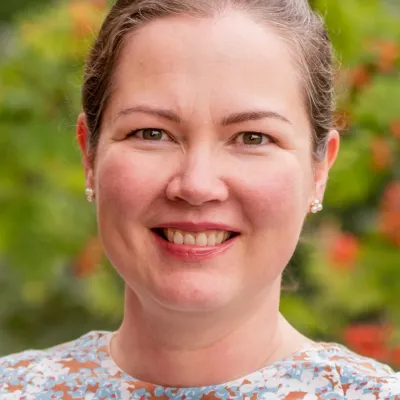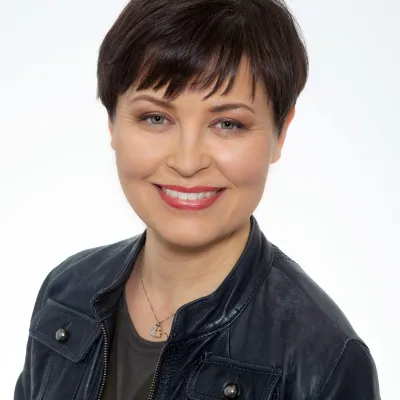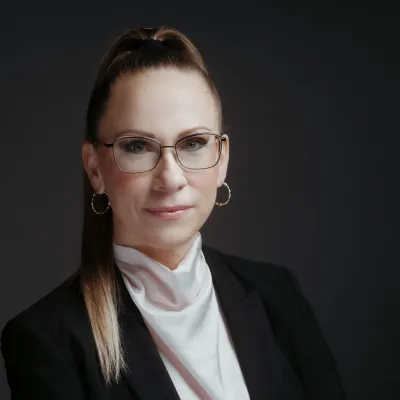Inclusion and citizen engagement are topical themes for both research and society amid the turbulence of digitalisation, green transition and service restructuring. In this blog post, we share the discussions we had in the Open Democracy network and shed light on how our work at VTT's Future Proof Societies team promotes the inclusion of citizens in processes of societal change.
Authors: Kaisa Lähteenmäki-Smith, Tiina Tuominen, Minna Halonen and Johanna Leväsluoto
According to the Finnish Institute for Health and Welfare inclusion means the opportunity to live a life that looks like you, to belong and participate in communities that are important to you, to influence issues that you find important and participate in cooperation for the common good. In other words, inclusion has intrinsic value and creates a sense of meaning and belonging.
Public organisations and companies are rapidly developing new ways to promote inclusion. Citizen involvement does not, however, always lead to inclusion, impact, or meaningful experiences. Inclusion is distributed unevenly between different groups. For example, children and young people are rarely heard in decision-making in Finland, and the young people's faith in the future is at an alarming level. Identifying these development trajectories and promoting the inclusion of children, young people and other important groups is one of the key steps for the green transition and creating solutions for education, urban development and mobility.
Inclusion means a long-term commitment to take citizens into account in decision-making
Future-proof decision-making, inclusion and citizen participation were discussed at the Open Democracy network's morning coffee, where we, Minna Halonen, Johanna Leväsluoto, Kaisa Lähteenmäki-Smith and Tiina Tuominen from VTT's Future Proof Societies team, laid the groundwork for the discussion by presenting relevant research examples. Johanna examined the possibilities of co-creation in promoting inclusion, while Tiina highlighted the tolerance for uncertainty as a precondition for inclusion in public organisations. Minna focused on the significance of authentic inclusion in futuring — collaborative futures thinking activity involving a broad range of actors — and Kaisa highlighted the importance of peer learning and phenomenon-based and emphatic work approach.
We kickstarted the workshop with the themes of future-proof decision making, highlighting the critical role of inclusion in decisions that affect the well-being of future generations. Making future-proof decisions requires a sufficiently wide-ranging vision and understanding of the economic, social, and environmental impacts in both the short and the long term. Utilising AI and digital tools in inclusion work is already a given, but the workshop participants still highlighted the importance of genuine human interaction in decision-making.
Futuring requires authentic citizen participation
We live in a time where ‘inclusion’ is a trend, but which also tempts organisations to legitimise their decisions by organising citizen events which do not have a real impact on decision-making. Authentic citizen participation stems from a sincere desire to listen to and accept different views and identities of people and to grant them power in decision-making processes. In other words, authentic citizen participation challenges organisations to hand over some of their decision-making powers to other actors.
This may be hard for professionals and public administrators, who may simply reject citizen suggestions as irrelevant or simply not feasible and resort to established approaches to shield themselves from critique. However, the ability to tolerate and make use of the ambiguities and uncertainties deriving from citizen participation is the only way to enable authentic inclusion in future-oriented development work. Authenticity also requires championing for citizen views throughout the decision-making process—not just in interaction events—to ensure that inclusion leads to impact. The workshop participants felt that on-going internal work and the sharing of success stories are important in promoting authenticity within organisations.
Future belongs to all of us, but even the experts can't know for sure what it looks like. That is why inclusion is intrinsic to futuring and a prerequisite for creating inclusive and sustainable futures. Authentic inclusion is possible by acknowledging the diversity of the participants, by feeding creativity and by creating an open and safe atmosphere for debate. The discussion highlighted good examples of the use of the Timeout Dialogue method and the value of facilitated face-to-face encounters, such as the immigration dialogue, and hobby buddy activities in Tampere. The participants also highlighted the importance of meeting citizens in everyday situations and hearing them out, which requires time, curiosity, and boldness.
Co-creation expands the possibilities of inclusion but demands structures
Occasional encounters with citizens can deliver great results, but consistent quality in inclusion requires structures, workshop participants concluded. Based on her dissertation, Johanna pointed out that new kinds of expertise and skills are needed to introduce future perspectives into decision-making, the integration of innovations, and the development of services.
Public sector professionals, officials and their networks are major forces for change and drivers of impact, but they also need to establish genuine dialogue with the service users, whose needs should be central to the process. Without it, co-creation is difficult.
We must have the courage to go where the future-makers are, and to use the language that they use, about issues concerning them. The methods of co-creation should address these needs while being open to the civil society, not just within companies or networks of experts and officials.
If we want to co-create, we need structures and common practices to support the experts so that co-creation is embedded in the way in which organisations work.
Silos block impact and narrow future perspectives, while impact chains make visible what is meaningful
Silo and sector boundaries have been identified as being among the most significant barriers to futureproofing, in addition to the distance between decision-makers and young people and children. Networks, school parliaments and workshops that are open to all bring people together and create encounters. Inclusion programmes, advocacy networks of the well-being services counties and embedding inclusion as a principle also in the administrative regulation strengthen the attention paid to inclusion in welfare services.
The workshop also included sharing good practices and tips for promoting inclusion, and the participants voted for the best ones. The winning tip was to make the 'from-inclusion-to-action' chain visible, thus highlighting the impact of inclusion and the importance of understanding related modelling, monitoring and evaluation. In terms of strengthening inclusion, personal skills, such as dialogic skills and methods, sufficient time and curious, bold attitude were found to be valuable.
Network provides inspiration, validation for one's work and shared practices
The Open Democracy network is an open-to-all network that shares information and good practices. It also supports the development of knowledge and shared understanding, promotes dialogue between research and practice and encourages social discussion on topics of interest to the network. The theme for 2024 is "AI and accessibility".
We will continue our research work related to inclusion and citizen engagement in VTT's Future Proof Societies team. The guiding star of Minna's research is to make future-oriented thinking a civic skill. Johanna wants to bring the users' needs as a starting point in the development of social and healthcare services and thus help to create effective services. Kaisa is developing the tools for phenomenon-based planning to support better management and impact. Tiina is mapping the relevance of different forms of citizen engagement for public organisations and citizens with different needs. This is how we promote the experiences of inclusion in social and technological changes, step by step.
Additional links in Finnish
The Finnish Institute for Health and Welfare: components of inclusion and principles for promoting inclusion (in Finnish)
Sitra's Futures Barometer (in Finnish)
Lasten Kaarina | City of Kaarina (in Finnish)
Tampere’s hobby buddy activities [City of Tampere - Leisure and hobbies] (in Finnish)
Wellbeing services counties' advocacy bodies as channels for citizen inclusion - Kaks.fi (in Finnish)
Open Democracy network - Avoinhallinto.fi (in Finnish)








